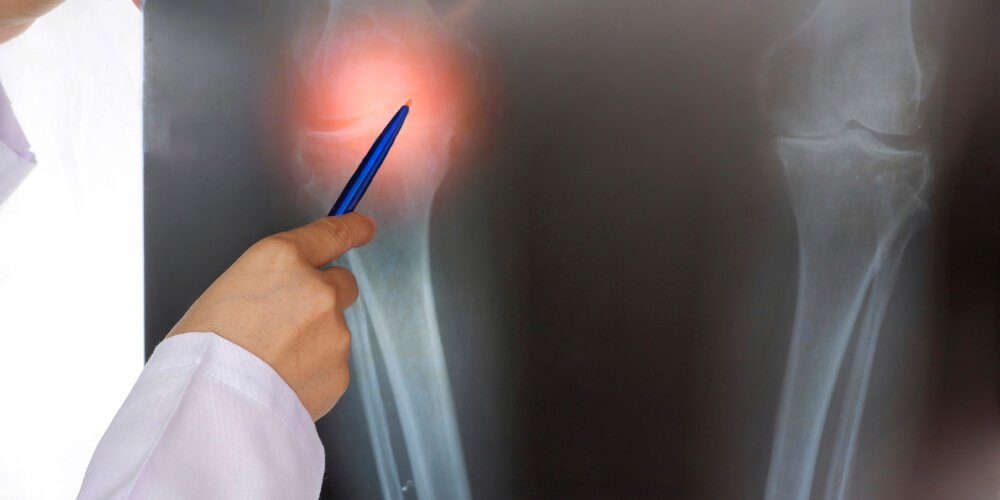The Power of AI in Medical Imaging
In the fast-paced world of healthcare, medical imaging plays a vital role in diagnosing and treating diseases. With the advent of Artificial Intelligence (AI), medical imaging software development has experienced a remarkable transformation. In this article, we will delve into the significance of AI in revolutionizing medical imaging software development and document management. By harnessing the power of AI, healthcare professionals can unlock new frontiers in accuracy, efficiency, and patient care.
The Significance of Medical Imaging Software Development
The development of advanced medical imaging software is crucial in providing accurate and timely diagnoses. AI has emerged as a driving force in this endeavor, enabling software to analyze and interpret medical images with exceptional precision. By leveraging machine learning algorithms, medical imaging software can learn from vast datasets, assisting radiologists in making faster and more accurate diagnoses. AI technology is revolutionizing the way we approach medical imaging, improving the overall quality of patient care.
Advancements in Medical Imaging Software Development
To fully grasp the impact of AI in medical imaging software, it’s essential to examine some of the key advancements this technology has fostered:
- AI algorithms enable medical imaging software to identify subtle abnormalities that might otherwise be missed.
- Deep learning techniques enhance the accuracy of image interpretation and reduce the occurrence of false positives.
- AI-powered software automates repetitive tasks, allowing radiologists to focus on complex cases and patient interaction.
These advancements not only enhance the diagnostic capabilities but also optimize the workflow in healthcare settings, freeing up medical professionals to concentrate on more complex cases and direct patient care. The advent of AI in medical imaging marks a significant stride toward a more accurate, efficient, and patient-centered healthcare delivery system.

Document Management in Medical Imaging
Efficient document management is crucial in the world of medical imaging where vast amounts of patient data and records are generated. The integration of AI into this domain has been transformative, resulting in a more streamlined approach to handling medical records and information.
With the advent of AI-powered medical document imaging software, tasks like automated sorting, categorization, and intelligent data extraction have been simplified. This revolution has not only streamlined document retrieval, analysis, and storage, but also ensured quick and seamless access to critical information, thereby improving healthcare delivery and patient outcomes. These advancements empower healthcare providers to make informed decisions with ease, ultimately contributing to faster, more accurate diagnoses and treatments.
- Medical document imaging software eliminates the need for manual sorting and filing of physical documents, reducing administrative time that can be better used in patient care.
- AI algorithms can intelligently categorize and tag documents, simplifying the search process and minimizing errors.
- Automation of document management ensures quicker access to critical information, enabling faster decision-making, which is often crucial in healthcare settings.
The Role of AI in Medical Document Imaging Software
AI-powered medical document imaging software is transforming the way healthcare organizations manage patient records, ensuring improved efficiency and accuracy. Medical document imaging software, enhanced by AI capabilities, offers numerous benefits in document management:
- Intelligent Optical Character Recognition (OCR) enables accurate extraction of relevant information from documents.
- Natural Language Processing (NLP) algorithms analyze unstructured data, extracting valuable insights for healthcare providers.
- Machine learning algorithms continuously improve the accuracy of document classification and data extraction.
While the power of AI in medical imaging and document management is undeniable, it’s important to recognize that this technology also presents its own set of unique challenges.
Understanding OCR and NLP: Key Technologies in AI-Powered Medical Imaging
Optical Character Recognition (OCR): OCR is an innovative technology that converts different types of documents, such as scanned paper documents, PDF files or images captured by a digital camera, into editable and searchable data. In the context of medical imaging, OCR can be used to extract written information from images or scanned documents, making it easy to digitally store, search, and analyze vital patient data.
Natural Language Processing (NLP): NLP is a branch of artificial intelligence that deals with the interaction between computers and humans using natural language. It allows machines to understand, interpret, and generate human language in a valuable and meaningful way. In healthcare, NLP can be used to analyze unstructured data, such as medical notes or patient records, extracting valuable insights and helping providers make more informed decisions about patient care.
Overcoming Challenges and Ensuring Accuracy
While AI presents immense opportunities in the realm of medical imaging, it’s critical to acknowledge and address the challenges that arise to ensure accuracy and reliability in medical imaging software development. In this section, we’ll delve into these challenges, and provide context on how platforms like Satori are effectively tackling them.
Data quality and diversity
Data quality and diversity are crucial for training AI algorithms, as they directly impact the accuracy of image interpretation. Satori addresses this by partnering with a diverse range AI solutions, ensuring a broad and diverse dataset for accurate learning and interpretation.
Collaboration
Collaboration between software developers and healthcare professionals is essential to ensure the software meets the specific needs of the industry. To facilitate this, TestDynamics encourages active collaboration between tech professionals and healthcare providers. This collaboration allows for the continuous improvement and refinement of the platform to better meet the evolving needs of medical practitioners.
Privacy and security
Privacy and security concerns must be carefully addressed to maintain patient confidentiality. Satori is committed to maintaining the highest standards of data privacy and security. The platform is designed with advanced security measures in line with industry best practices and compliance standards, ensuring patient data is safeguarded at all times.
By proactively addressing these challenges, the Satori platform ensures the benefits of AI can be fully realized in medical imaging software development, while upholding accuracy, reliability, and patient confidentiality.
A Glimpse into Tomorrow's Healthcare
AI’s transformative potential in medical imaging software development paints a compelling picture of the future of healthcare. With platforms like Satori at the forefront, we’re on the cusp of unprecedented advancements that are set to revolutionize the medical landscape.
Let’s explore some exciting trends and implications that are shaping the horizon:
Integration of AI with Computer Vision
The fusion of AI and computer vision opens the door for real-time image analysis during procedures. Satori, as a platform, offers healthcare providers access to AI solutions capable of such real-time data processing, potentially enhancing the precision of immediate medical decisions.
Advancements in Natural Language Processing (NLP)
NLP is set to revolutionize the way medical data is managed, enabling automated report generation and data extraction. Through Satori, healthcare providers can tap into the power of AI solutions that harness these NLP advancements, streamlining administrative tasks, and freeing more time for patient care.
Enhanced Image-Guided Interventions
The application of AI can make image-guided procedures more precise and personalized. Satori provides access to these AI-powered solutions, assisting healthcare providers in creating personalized treatment strategies, and ultimately improving patient outcomes.

The Transformational Role of AI
The role of AI in medical imaging software development and document management cannot be overstated. The revolution it brings to the field of healthcare promises improved accuracy, efficiency, and patient care. As we embrace this transformative technology, let us seize the opportunities it offers to revolutionize our medical imaging processes and elevate the standard of healthcare.
AI-Powered Medical Imaging Software: A New Frontier
In a world where accurate and timely diagnoses are crucial, AI-powered medical imaging software holds immense potential. By harnessing the power of AI algorithms, healthcare professionals can achieve new levels of precision and efficiency in analyzing medical images. The advancements in medical imaging software development have paved the way for improved patient care and outcomes.
Embracing the AI Revolution in Healthcare
It is essential for healthcare organizations and professionals to stay informed and embrace the potential of AI in medical imaging software development and document management. By keeping up with the latest advancements and incorporating AI-powered solutions, we can revolutionize the way we deliver healthcare services, enhancing accuracy, efficiency, and patient outcomes.
In conclusion, the role of AI in medical imaging software development and document management is set to redefine the healthcare landscape. Embracing this revolution and adopting AI-powered solutions will unlock new frontiers in medical imaging, ensuring improved diagnoses, streamlined workflows, and ultimately, better patient care. Let us harness the power of AI and shape the future of medical imaging together.
If you’re prepared to discover how the Satori platform, can revolutionize your healthcare delivery, we invite you to reach out to us. Let’s collaborate to harness the transformative power of these advanced technologies, propelling your medical practice to unprecedented levels of diagnostic accuracy, efficiency, and patient care.
 Back to News
Back to News Tech Insights
Tech Insights


